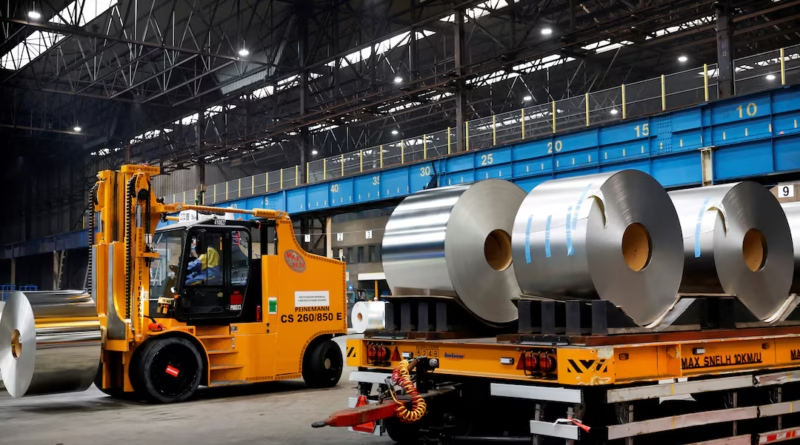How Rising Tariffs on Chinese Imports Impact the U.S. Metal and Steel Industry in 2025: Challenges for Steel Fabricators and Contractors
The U.S. construction industry heavily relies on steel and metal imports, especially from China. However, in 2025, new tariffs on Chinese steel and aluminum are reshaping the market, creating both opportunities and challenges for contractors, fabricators, and material suppliers.
This article explores how these tariffs affect costs, supply chains, and project timelines—and what businesses can do to adapt. We’ll also discuss the role of structural steel estimating services in helping contractors navigate these changes.
Why Are Tariffs on Chinese Steel Increasing?
In early 2025, the U.S. government reinstated a 25% tariff on steel imports and raised aluminum tariffs to 25%, closing previous exemptions . The goal is to protect domestic manufacturers from cheap, subsidized Chinese steel flooding global markets.
However, China supplies only 2% of U.S. steel imports directly—most Chinese steel enters through third countries, making enforcement difficult . Despite this, the tariffs are causing ripple effects across the construction sector.
How Tariffs Affect Steel Prices and Supply Chains
1. Higher Costs for Contractors and Fabricators
With tariffs increasing, steel prices are expected to rise by 8.2%, and aluminum by 5.7%. This directly impacts:
– Construction budgets – Projects requiring large steel volumes (like bridges, skyscrapers, and industrial plants) will face cost overruns.
– Material suppliers – Those relying on imported steel may struggle with shrinking profit margins.
For contractors, accurate cost forecasting is crucial. This is where steel estimating services become essential—helping businesses adjust budgets before prices spike further.
2. Longer Lead Times and Supply Shortages
Since the U.S. lacks enough domestic steel production to meet demand, contractors may face:
– Delays in material deliveries – With fewer imports, fabricators must source from alternative suppliers, extending project timelines.
– Bidding challenges – Without real-time price adjustments, contractors risk underestimating costs.
A reliable structural steel estimating service can help by providing up-to-date material cost projections, reducing financial risks.
3. Impact on Clean Energy and Infrastructure Projects
Steel is vital for wind turbines, solar farms, and power grids. Tariffs could:
– Increase wind energy project costs by 1%.
– Slow down infrastructure projects funded by the Bipartisan Infrastructure Law .
Contractors in these sectors must factor in tariff-related price hikes when planning large-scale builds.
How Contractors and Fabricators Can Adapt
1. Diversify Supply Chains
Relying solely on Chinese steel is risky. Businesses should explore:
– Domestic suppliers – U.S. steel production is increasing, but capacity remains limited.
– Alternative import markets – Countries like Canada and Mexico may offer competitive rates, though they also face tariffs .
2. Use Advanced Estimating Tools
With fluctuating steel prices, manual estimates are no longer sufficient. Steel estimating services leverage AI and market data to provide precise cost forecasts, helping contractors bid competitively.
3. Lock in Prices Early
Given the volatility, contractors should:
– Negotiate long-term contracts with suppliers.
– Use hedging strategies to stabilize material costs.
4. Optimize Project Planning
– Pre-order materials to avoid last-minute price surges.
– Revise contract clauses to account for tariff-related cost changes .
The Future of the U.S. Steel Industry
While tariffs aim to boost domestic production, challenges remain:
– Worker shortages – Steel mills struggle to hire skilled labor despite high wages .
– Retaliatory tariffs – Canada and the EU have imposed counter-tariffs, complicating trade .
– Inflation risks – Higher steel costs could drive up construction expenses industry-wide.
For contractors, staying ahead means leveraging tools like structural steel estimating services to maintain profitability in a shifting market.
Final Thoughts
The 2025 steel tariffs are reshaping the construction landscape, forcing contractors and fabricators to rethink sourcing, budgeting, and project management. While domestic production may grow, supply chain disruptions and rising costs pose significant hurdles.
By using data-driven steel estimating services, businesses can mitigate risks and keep projects on track. The key is adaptability—whether through smarter procurement, advanced cost forecasting, or strategic partnerships.
